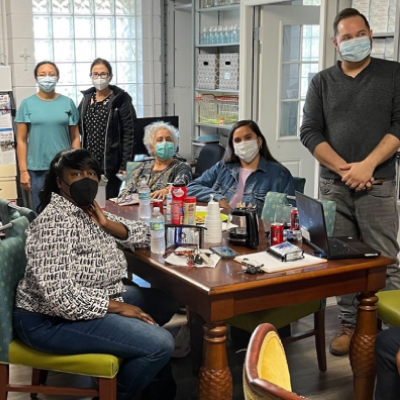- Who We Are
- Clinician Employment
- Publications
- Witness to Witness (W2W)
- Kugel & Zuroweste Health Justice Award
- Your Voice Matters: Photovoice Project
Thu, 08/26/2021 | by Kaethe Weingarten


I have always been haunted by certain kinds of injustices. Since the founding of Witness to Witness (W2W), there have been many issues that I cannot shake. In July 2019, I heard Columbia Law Professor Elora Mukherjee’s testimony to the House Committee on Oversight and Reform, which detailed stories of parents separated from their children for months, with no provision for linking parents/caretakers with the children with whom they had crossed the border and therefore no way of re-connecting families. I thought about times I had lost track of a child and how terrifying an hour of uncertainty had been for me. I understood in my body how harrowing weeks, months, perhaps years would be. I felt that my heart would break.
But it cannot. Having heard from so many providers over my decades of assisting health care and service workers, I know I am not alone in feeling that sometimes my empathy – that quality that is so essential to all the work that I, that we, do – is the very quality that is harming me. At the same time, I know that there are ways of coming to my empathy that can better serve me and the people I care for. Here are three steps to move empathy into action.
1. Take your own experience out of the situation to which you are responding. By focusing on what others are experiencing, not what I would experience were I in that person’s situation, I minimize the personal distress and immobilizing effects that comes from imagining myself walking in somebody else’s shoes. While it may be impossible to do that all of the time or totally any of the time, it is a direction to aim for.
2. Notice sensations in your body for clues as to whether you are getting emotionally dysregulated. Our bodies provide very reliable signals or cues as to whether what we are hearing, thinking about, and responding to is exceeding our ability to manage effectively. Most of us send ourselves the same cues most of the time. For instance, you may notice a more rapid heartbeat when you are stressed or you may notice a sensation of heat rising from your belly to your neck. When your body helpfully provides signals to you that you are upset, it is important to pay attention. Awareness can lead to using one of the many grounding techniques that help us re-regulate and restore ease. Grounding techniques can be as simple as placing your two feet solidly on the ground; or taking a deep breath in, holding your breath briefly and then exhaling a bit longer than your inhale; or looking around the room and noting all the different colors you can see. When we are at ease, it is much easier to distinguish what is yours to deal with and what belongs to the other person.
3. Draw wisdom from your past experiences. Finally, sometimes we are triggered when listening to another person precisely because it brings up memories of something that is very similar to or closely resembles what happened to us that was disturbing or painful at the time. In addition to using grounding techniques, we can ask ourselves a few very simple questions: A. Is this happening to me now? B. Am I safe now? C. Did I learn something from my experience that can help me be helpful to someone else?
When we minimize our personal distress, it is easier to be empathic. When we are empathic we can move into compassionate action. Taking compassionate action keeps us from feeling that we are aware but disempowered witnesses, and allows us to move into empowered action on behalf of others. When we do so, we find we are helping ourselves as well as those we are serving. Empathy can be energizing; compassion doesn’t have to fatigue.
Learn more about Dr. Weingarten and her Witness to Witness program, and access numerous resources on stress, anxiety, witnessing, and more: www.migrantclinician.org/witness-to-witness
Got some good news to share? Contact us on our social media pages above.
Return to the main blog page or sign up for blog updates here.







